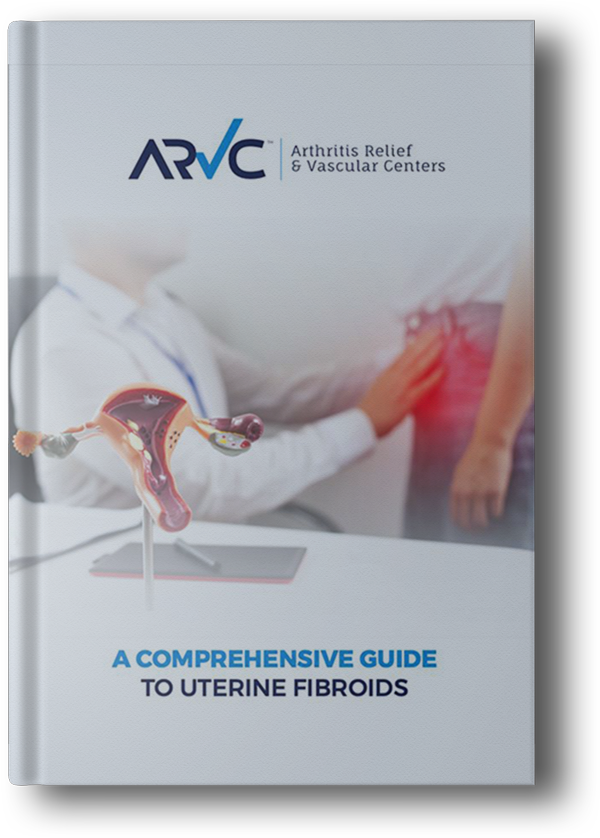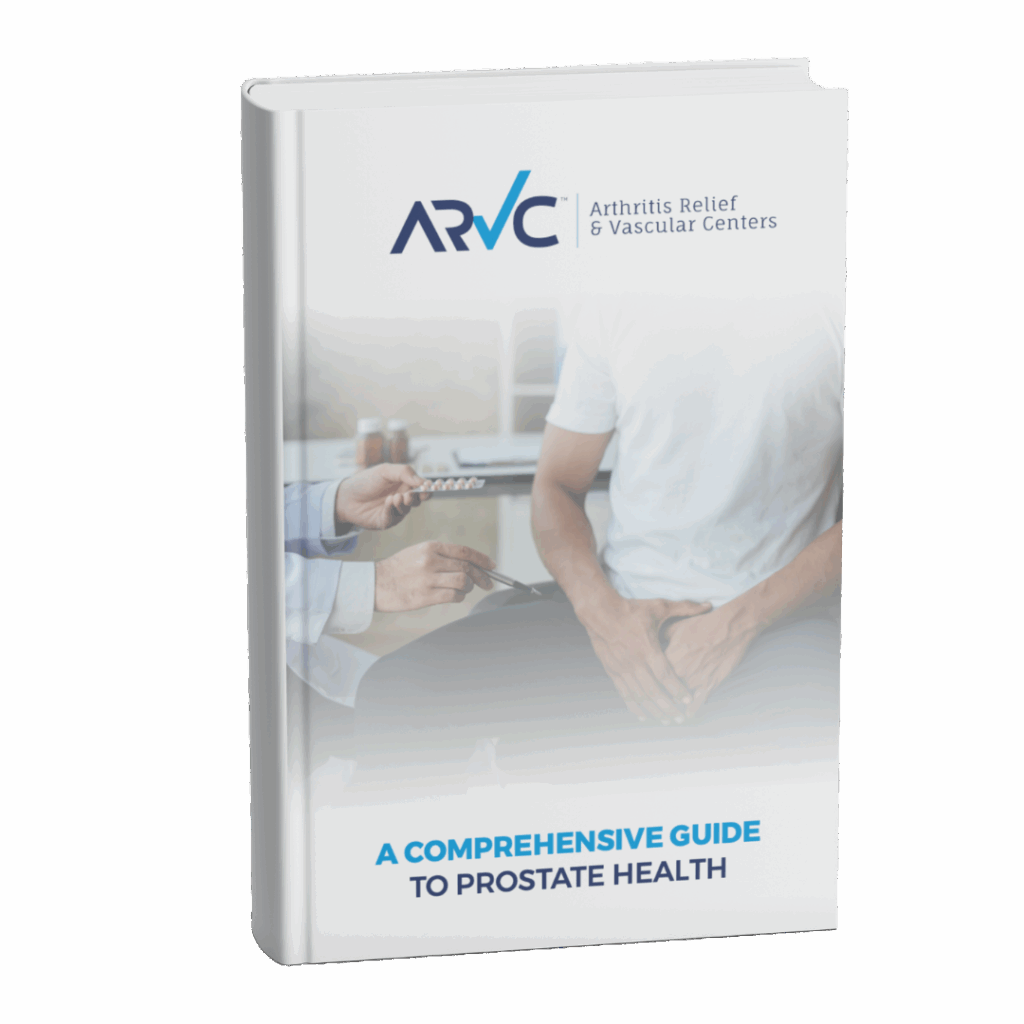(GAE) Genicular Artery Embolization
Background of Osteoarthritis in the Knee
Knee osteoarthritis (OA) is one of the most common types of arthritis, affecting millions of people, particularly as they age and is the leading cause of disability in the United States. OA is a degenerative joint disease where the cartilage that cushions the knee joint gradually wears down with time and injury.
What is Genicular Artery Embolization (GAE)?
Read More
- Continue Reading
What is Genicular Artery Embolization (GAE)?
In an osteoarthritic (OA) joint, things get a little out of whack, and that includes the growth of new blood vessels, a process called angiogenesis. It’s not usually a bad thing – this is the normal process of healing – but in OA, it can actually make things worse.
As the cartilage in your joint breaks down in osteoarthritis, it triggers a cascade of events. One of these is the release of certain factors that encourage the formation of new blood vessels in the joint tissues, particularly in the synovium (the lining of the joint).
Now, these new blood vessels are often leaky and not as well-regulated as established ones. This leakiness allows inflammatory cells and molecules that are already present in the OA joint to get into the tissues more easily. Think of it like opening up new highways for the bad guys to get in and cause trouble!
These inflammatory cells then release even more inflammatory substances, creating a vicious cycle. This ongoing inflammation damages the joint tissues further, contributing to the progression of osteoarthritis.
Even worse, these new blood vessels also sprout nerve fibers along with them. These new nerves can become hypersensitized, meaning they become more easily triggered and send pain signals more readily. So, not only does angiogenesis contribute to inflammation, but it can also directly increase your sensitivity to pain in the osteoarthritic joint. It’s like the joint is not only inflamed but also has a souped-up pain alarm system.
Angiogenesis in an osteoarthritic joint fuels the fire of inflammation by providing pathways for inflammatory cells and molecules, and it can crank up the pain signals by bringing in more sensitive nerve fibers. Now with embolization therapies like Genicular Artery Embolization for the knee (GAE), shoulder and hip, we can treat the TRUE source of inflammation and pain once and for all.
Targeting the Source of the Inflammation and Pain
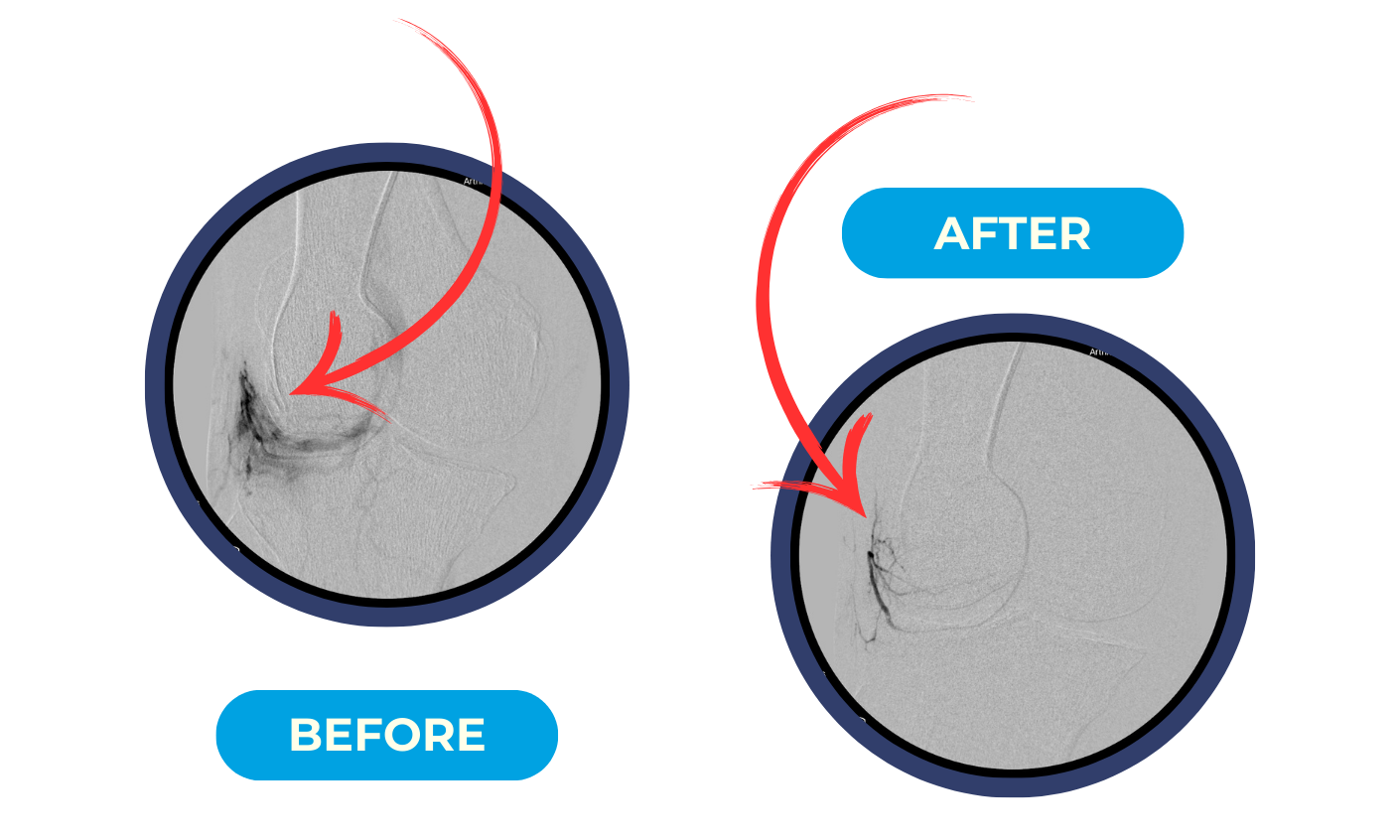
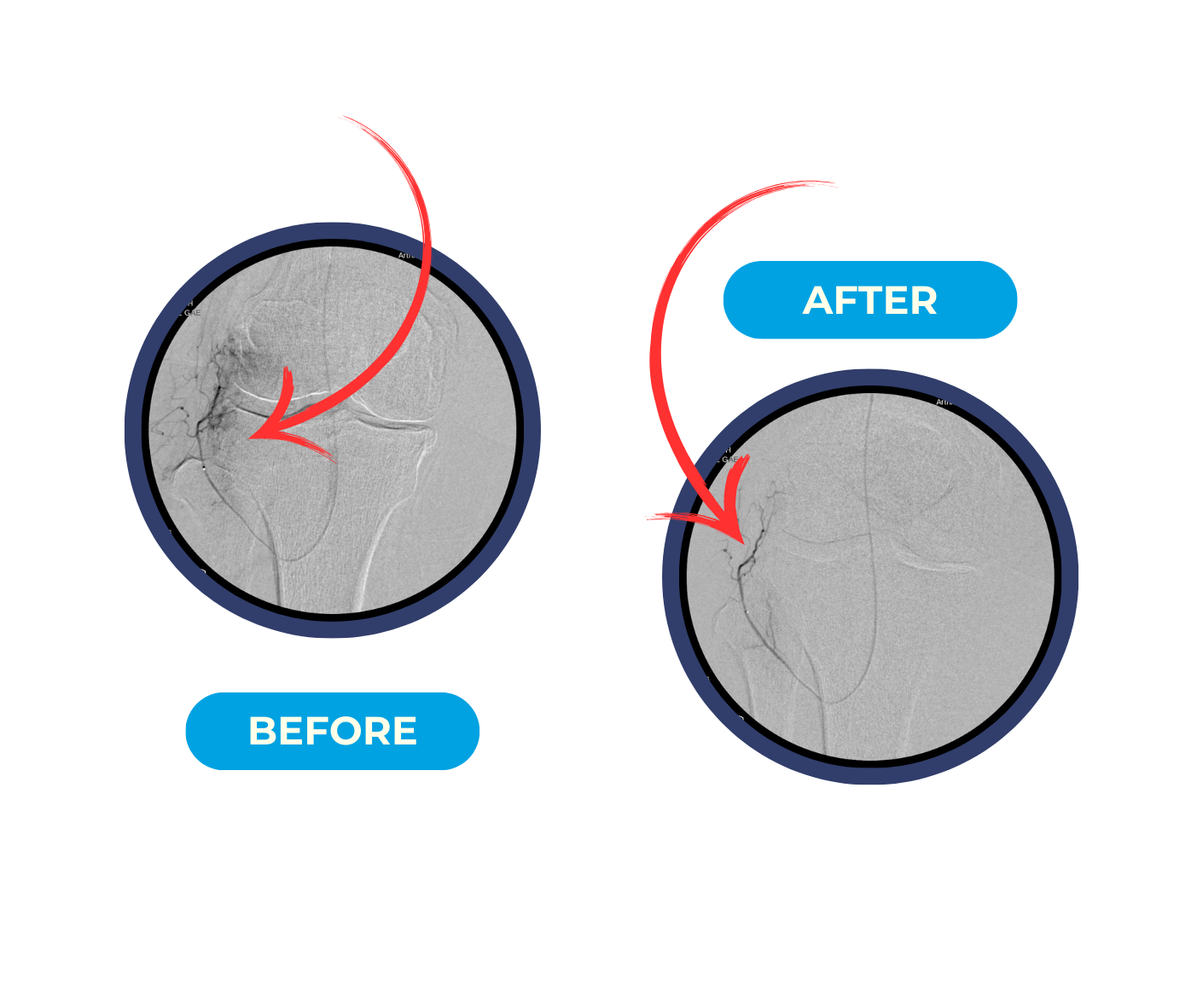
The shaded area, called “blush” is the abnormal formation of micro blood vessels and nerve endings called angiogenesis that develop due to arthritis, which is the primary source of inflammation, swelling and pain. Just seconds after treatment, the angiogenic vessels are occluded, restricting the pathway of inflammation and pain in the joint.
Painless Solution
for Knee Pain
Genicular Arteries of the Knee Joint
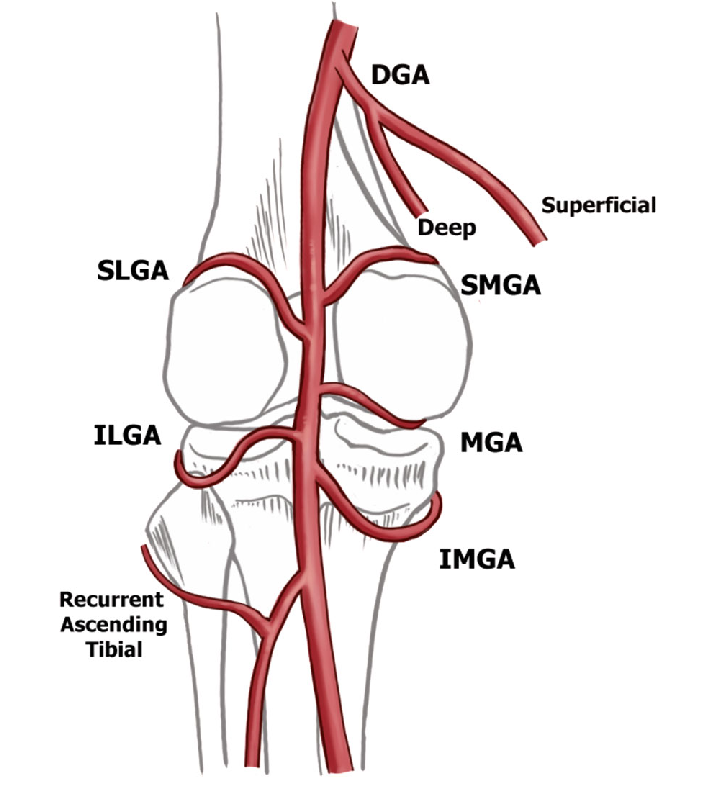
The image illustrates the genicular artery network, which plays a key role in the blood supply to the knee joint. These arteries are targeted in Genicular Artery Embolization (GAE)—a minimally invasive procedure used to treat chronic knee pain, often related to osteoarthritis.Here are the main arteries shown
- DGA (Descending Genicular Artery)
- SLGA (Superior Lateral Genicular Artery)
- SMGA (Superior Medial Genicular Artery)
- MGA (Median Genicular Artery)
- ILGA (Inferior Lateral Genicular Artery)
- IMGA (Inferior Medial Genicular Artery)
By targeting these arteries with embolization, GAE reduces abnormal blood flow and inflammation around the knee joint, helping to alleviate pain without the need for major surgery.
Testimonials.
Here’s what our patients say about their experience with GAE at ARV Centers
- Minimally-invasive procedure: GAE is performed by a Vascular & Interventional Radiologist that specializes in endovascular procedures. They use live X-rays to guide a tiny catheter into the blood vessels supplying the knee (the genicular arteries). Under contrast angiography, the abnormal network of blood vessels is visualized.
- Targeted treatment: Microscopic beads are injected through the catheter to block the abnormal blood vessels that have formed in the lining of the knee joint (synovium) due to osteoarthritis.
- Goal: The goal is to reduce inflammation and pain associated with osteoarthritis by decreasing this abnormal blood flow.
- Pain reduction: Studies show significant improvement in pain and function for many patients.
- Minimally invasive: This means non-surgical, less pain, and faster recovery time compared to surgery.
- Lower risk: Fewer complications compared to knee replacement surgery.
- Preserves the knee joint: It’s an option for delaying or potentially avoiding major surgery.
- Have moderate to advanced osteoarthritis of the knee.
- Experience persistent pain despite trying other conservative treatments like injections.
- Are not an ideal candidate for surgery, or wish to avoid it.
- Someone who has had a Joint Replacement and is still having pain 9+ months after surgery.
Yes, Genicular Artery Embolization is covered by most major insurances plans including Medicare.
- Yes, the same treatment can be performed for the hip or shoulder and we have seen the same positive treatment outcomes from these joints as we have seen in the knee. See hip embolization and shoulder embolization on our website for more information.
Interested in Learning More?
- GAE is a safe and effective treatment for knee arthritis and post joint replacement knee pain, an alternative to knee replacement and other surgical interventions. If you're considering GAE, schedule a consultation at Arthritis Relief & Vascular Centers to discuss if this procedure is right for you.

